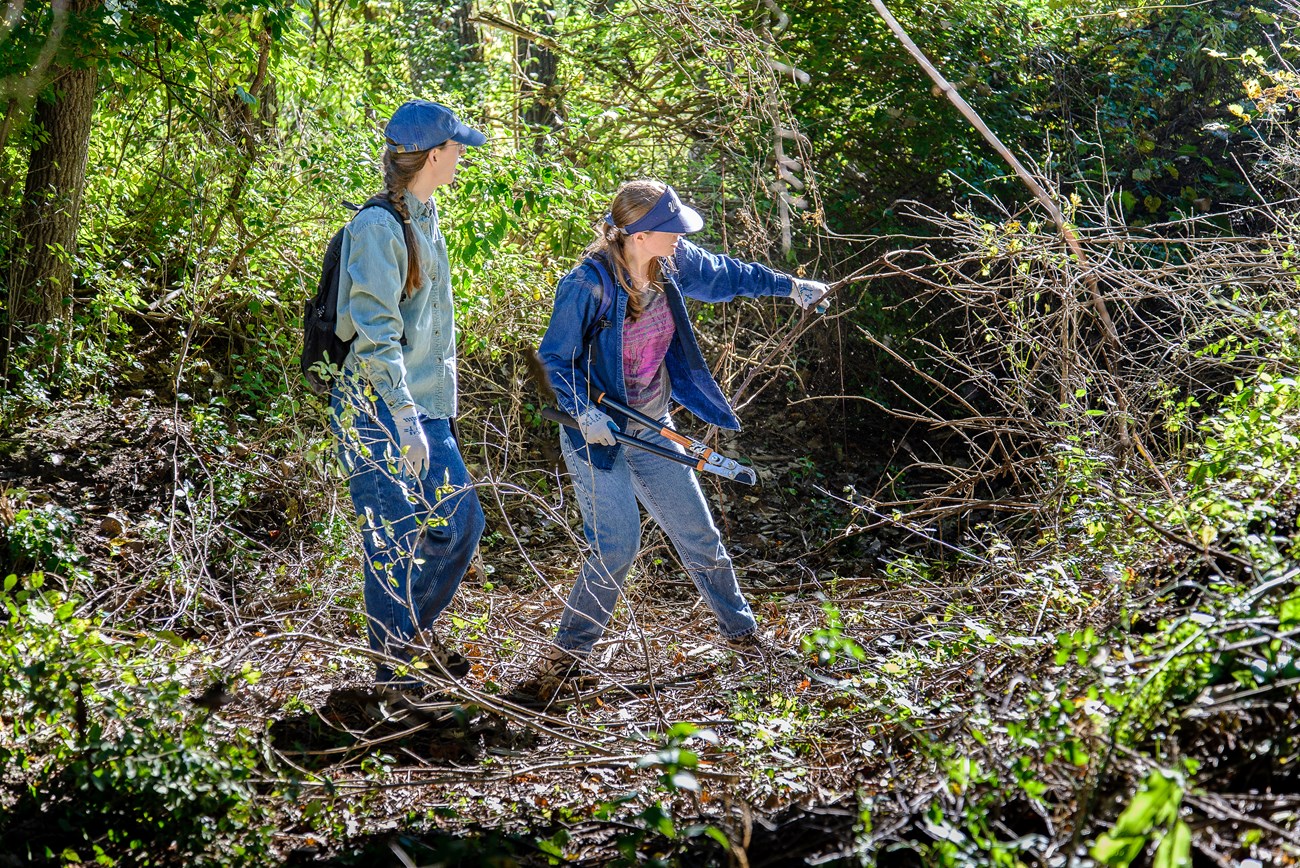Last updated: March 25, 2025
Article
Battling Invasive Plants in Cuyahoga Valley

NPS / Ted Toth
Park scientists consider invasive species one of the biggest threats to the health of natural habitats. Like weeds in a garden, they multiply and spread quickly. Invasive plants are easier to see than invasive wildlife, which are often small insects. There are at least 61 of these plants found in Cuyahoga Valley. Park staff and volunteers hand pull, cut, chainsaw, and sometimes apply chemical pesticides to control the worst ones.
What are non-native and invasive plants?
Non-native plants are plants growing in an area where they do not naturally occur. Non-native plants have been brought to North America from other continents for use in agriculture, gardening, erosion control, and medicine—or simply by accident.
Many non-native plants are considered invasive. Invasive plants have the following characteristics. First, they reproduce rapidly. Second, they spread over large areas of the landscape. Third, they have few or no natural controls, such as herbivores and diseases, to keep them in check. These plants displace native plants and may disrupt the local balance of nature. For example, Japanese honeysuckle may crowd out native shrubs, eliminating songbird habitat. Some native plants have also become invasive due to habitat changes caused by human land use. For more information visit the National Invasive Species Council website.
Which plants are considered invasive in Cuyahoga Valley National Park?
Currently, 16 non-native plants are considered to be invasive within the park. These plants invade a broad range of habitats, from forests and meadows to wetlands and disturbed roadsides. Click on the common names below for more information about each plant.
|
Scientific Name |
Common Name |
|---|---|
|
Elaeagnus umbellata |
|
|
Rhamnus cathartica, R. frangula |
|
|
Lonicera maackii, L. morrowii, L. tatarica |
|
|
Phragmites australis |
|
|
Alliaria petiolata |
|
|
Berberis thunbergii |
|
|
Lonicera japonica |
|
|
Polygonum cuspidatum |
|
|
Rosa multiflora |
|
|
Typha angustifolia |
|
|
Ligustrum vulgare |
|
|
Lythrum salicaria |
|
|
Phalaris arundinacea |
Where can I find more information?
More extensive information about invasive species on public lands is available from the U.S. Department of Agriculture. In addition, the Ohio Invasive Plants Council has invasive plant fact sheets specific to this state.
How are we addressing the invasive plant problem?
Cuyahoga Valley National Park is developing a volunteer-based, long-term exotic plant monitoring and control program. This program features the adoption of sections of the park by volunteers who are trained to look for and control invasive plants. It is a great chance for volunteers to experience the lesser known areas of the park while helping to conserve our native plant communities. If you are interested in participating in this program visit our volunteer page.
Tags
- cuyahoga valley national park
- ohio
- midwest
- invasive plants
- pests
- exotic & invasive species
- invasive species
- invasive plant management
- autumn olive
- resource management
- natural resource management
- collaborative conservation
- landscape stewardship
- conservation partnerships
- volunteers
- partners
- partnerships
- conservation
